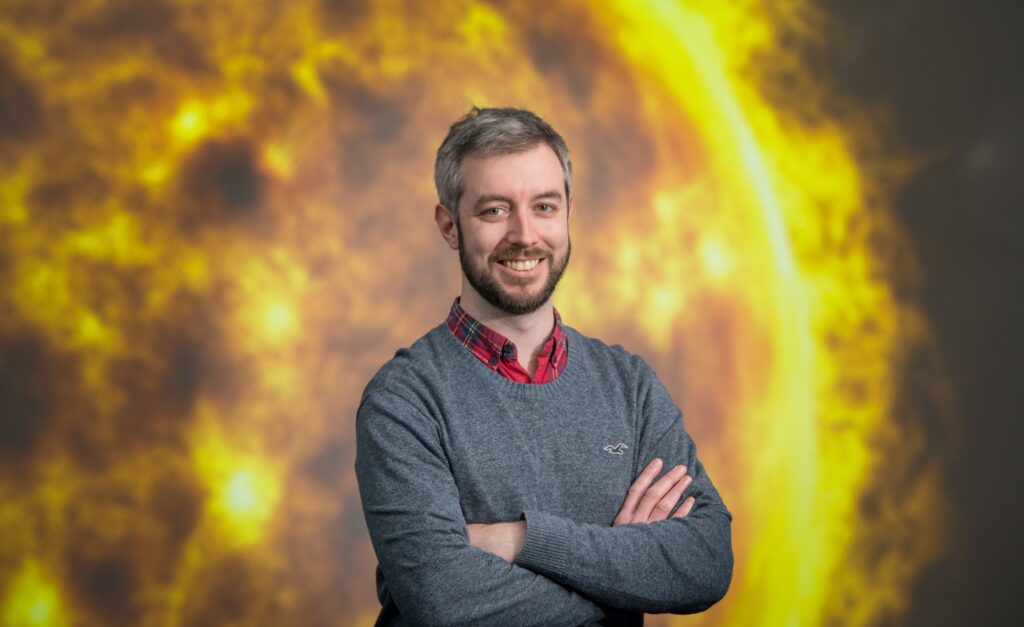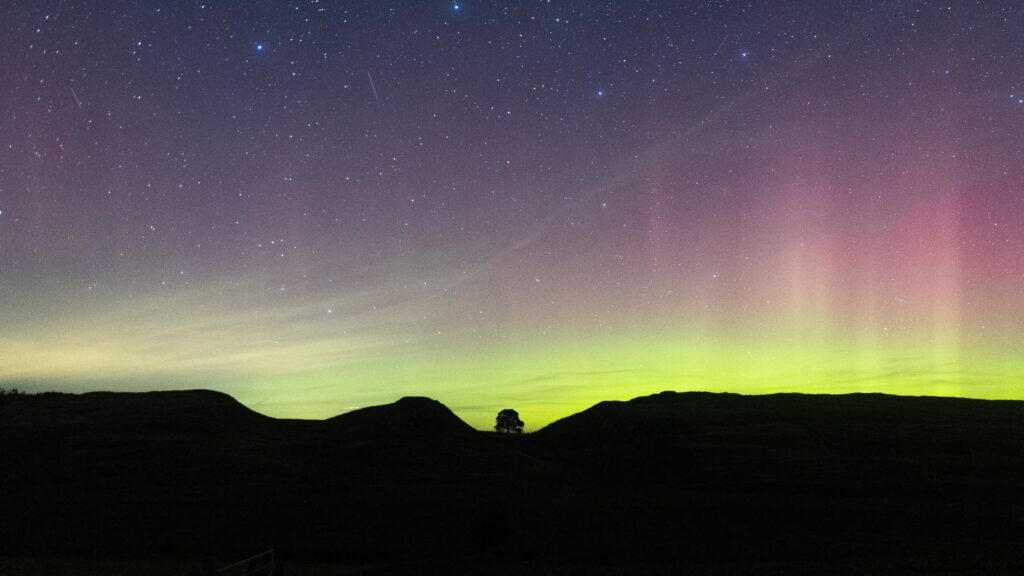
The weather – what’s forecast and what actually arrives – is a daily topic and a longtime conversation-maker.
But Northumbria University scientist Dr Andy Smith has his sights trained rather higher – on the weather in outer space.
With society increasingly dependent on technology, activity such as solar eruptions has the potential to cause serious disruption to power and communication networks, leading to severe space weather being added to the UK National Risk Assessment system.
A world leader in the application of AI techniques for the understanding and prediction of space physics, with his models used by the Met Office to inform space weather forecasts, Dr Smith has been awarded a research fellowship from the Natural Environment Research Council to investigate the more accurate forecasting of serious space storms.
“It is not a case of if the Earth will be hit by a serious space weather event,. It’s a case of when artificial intelligence will allow us to predict such an event and protect ourselves from it.”
Dr Andy Smith
Now this has been followed by Dr Smith, who is developing new ways of predicting space weather using artificial intelligence, being recognised by the Royal Astronomical Society – of which is he already a Fellow – with its prestigious Winton Award for his research.
“One of the primary ways in which space weather can impact society is through an unexpected surge of energy in power networks and pipelines on the ground,” said Dr Smith, who is a senior research fellow at Northumbria University’s Department of Mathematics, Physics and Electrical Engineering.
“These surges can accelerate the ageing of power systems, or even lead to the immediate failure of components such as power transformers, leading to a complete loss of power.”
Data from satellites and space missions from the last 20 years will be examined by Dr Smith and his team.
They will use that information to develop computer models which can predict when such storms could occur in future, as well as forecasting phenomena such as the Northern Lights, or aurora.
“The technology we are developing through this project could protect the Earth from the impact of geomagnetic storms as we could predict when such events would occur, allowing us to prepare,” he added.

Forecasting would be co-ordinated through the Met Office which would inform the National Grid, allowing the activation of plans to protect the power system.
Dr Smith said: “It is not a case of if the Earth will be hit by a serious space weather event,. It’s a case of when artificial intelligence will allow us to predict such an event and protect ourselves from it.”
Speaking about his award, Dr Smith said: “I’m honoured to have even been nominated.”

Sunderland Museum and Winter Gardens was the first municipally funded museum in the country outside London. It houses a comprehensive collection of the locally produced Lustreware pottery.










